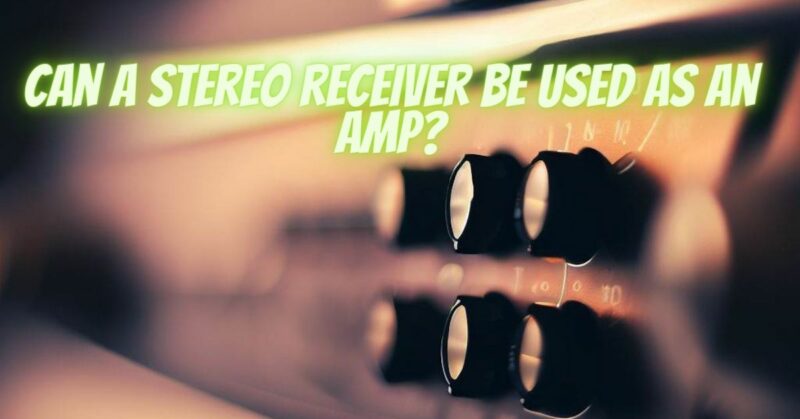A stereo receiver is a versatile audio component that serves as the heart of an audio system, combining amplification, source selection, and control functions in a single unit. While it is designed to perform multiple tasks, many individuals wonder if a stereo receiver can be used solely as an amplifier. In this article, we will explore the potential of using a stereo receiver as an amplifier and discuss the considerations involved.
- Amplification Capabilities:
A stereo receiver inherently includes an amplifier as one of its core components. The built-in amplifier provides the necessary power to drive speakers and reproduce sound. This amplification functionality is a fundamental aspect of a receiver, ensuring that audio signals are adequately amplified to a level suitable for the connected speakers. Therefore, a stereo receiver can indeed be used as an amplifier, leveraging its amplification capabilities.
- Preamp/Amplifier Separation:
In some cases, individuals may choose to separate the preamplifier and amplifier functions for specific audio setups. This separation allows for more flexibility and customization, as you can pair a dedicated preamplifier with a separate power amplifier of your choice. In such scenarios, a stereo receiver can be utilized solely as an amplifier by bypassing the internal preamplifier section. By connecting a separate preamplifier or audio processor to the receiver’s amplifier inputs, you can leverage the receiver’s amplification capabilities while utilizing the external preamplifier for source selection and control.
- Inputs and Connectivity:
When using a stereo receiver as an amplifier, it is essential to consider its input options and connectivity. Most receivers offer various input types, including RCA, optical, coaxial, and HDMI. These inputs allow you to connect different audio sources directly to the receiver’s amplifier section. Ensure that the input options align with the devices you intend to connect, whether it be a CD player, media streamer, turntable, or other audio sources.
- Speaker Connections:
Another crucial aspect to consider is the speaker connections available on the stereo receiver. Typically, receivers provide speaker wire terminals or binding posts for connecting the speakers. Ensure that the speaker connections on the receiver match the speaker wire connections you intend to use. By correctly connecting the speakers to the receiver, you can utilize its amplifier section to power and drive the speakers for optimal sound reproduction.
- Audio System Integration:
Using a stereo receiver solely as an amplifier allows for seamless integration with other audio components. As an amplifier, the receiver can be part of a larger audio system, providing power to the speakers while integrating with other devices such as preamplifiers, audio processors, or media players. This integration enables you to build a customized audio setup that suits your preferences, while also benefitting from the amplifier capabilities of the receiver.
Conclusion:
A stereo receiver can indeed be used as an amplifier, leveraging its built-in amplification capabilities. By bypassing the internal preamplifier section and connecting external preamplifiers or audio processors, you can utilize the receiver’s amplifier to power your speakers. Consider the input options, connectivity, and speaker connections provided by the receiver to ensure compatibility with your desired audio setup. This versatility allows you to create a customized audio system that meets your specific requirements and preferences.


